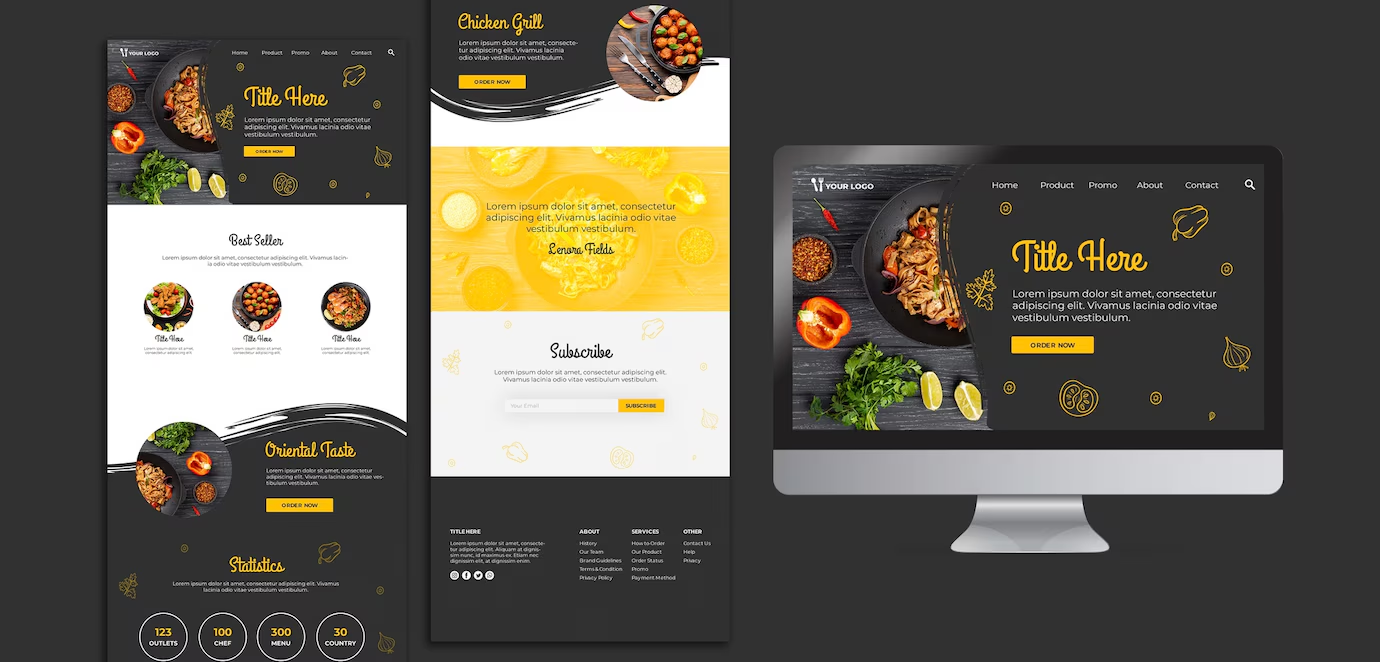Restaurant Web Development: Cost, Features, Steps, Trends, Revenue Models & Types

In today’s digital-first world, a restaurant’s online presence can be just as important as its food. Whether you run a small café, a cloud kitchen, or a fine-dining chain, having a well-designed website can boost visibility, enhance customer experience, and even generate direct online orders.
This blog covers everything you need to know about restaurant web development in 2025 — from costs and key features to trends, revenue models, and the types of restaurant websites that work best.
What Is the Cost of Developing a Restaurant Website?
The cost of developing a restaurant website depends on its complexity, features, and design expectations.
| Type | Features | Estimated Cost (INR) | Estimated Cost (USD) |
| Basic Website | Home, Menu, Contact | ₹10,000 – ₹25,000 | $120 – $300 |
| Dynamic Website | CMS, Gallery, Blog | ₹25,000 – ₹50,000 | $300 – $600 |
| Online Ordering Website | Cart, Login, Payments | ₹50,000 – ₹1,00,000 | $600 – $1,200 |
| Custom Web App | CRM, Loyalty, POS | ₹1,00,000 – ₹5,00,000+ | $1,200 – $6,000+ |
Additional Expenses:
-
Domain Name: ₹800/year
-
Hosting: ₹2,000 – ₹5,000/year
-
SSL Certificate: ₹1,000 – ₹2,000/year
-
Maintenance: ₹5,000 – ₹20,000/year
Must-Have Features in a Restaurant Website
A well-rounded restaurant website should blend functionality, aesthetics, and customer convenience. Here are must-have features:
🎯 Essential Features
-
Homepage with branding visuals
-
Menu (PDF or dynamic)
-
About Us section
-
Contact page with Google Maps
-
Table reservation form
-
Testimonials & reviews
-
Mobile responsiveness
-
Social media integration
💡 Advanced Features
-
Online ordering and delivery system
-
Live table booking calendar
-
User login & order history
-
Loyalty points or coupons
-
WhatsApp ordering/chat integration
-
Payment gateway (Razorpay, Stripe, etc.)
-
Admin dashboard for order/menu management
-
Email & SMS notifications
-
Google Analytics integration
-
Multilingual & dark mode support
🛠️ Steps to Develop a Restaurant Website
Here’s a step-by-step breakdown of the restaurant web development process:
-
Requirement Gathering
-
Identify the type: dine-in, takeaway, cloud kitchen, etc.
-
Choose between custom development or CMS (like WordPress).
-
-
Design Phase
-
Create wireframes and UI mockups (use Figma or Adobe XD).
-
Focus on mobile-first, visual-rich design.
-
-
Frontend Development
-
Develop using HTML, CSS, JS, or frameworks like React/Tailwind.
-
-
Backend Development
-
Set up database and server logic using PHP, Node.js, or Django.
-
Add admin panel to manage bookings, orders, and content.
-
-
Integrations
-
Add payment gateways, Google Maps, CRM, POS, or WhatsApp API.
-
-
Testing
-
Perform usability, speed, mobile, and SEO testing.
-
-
Deployment
-
Host on platforms like Hostinger, AWS, or DigitalOcean.
-
Add SSL, domain, and submit to search engines.
-
-
Maintenance
-
Regular updates, backups, and security patches.
-
🔥 Restaurant Website Trends in 2025
Stay ahead of the curve with these current trends:
-
AI Chatbots for instant customer service
-
Voice Ordering Integration
-
AR Menu Previews (scan and view dish in 3D)
-
Progressive Web Apps (PWA) for app-like performance
-
Live Kitchen Feed for transparency
-
Dynamic QR Menus editable by admins
-
Personalized Discounts using customer behavior
-
Dark Mode UI for better UX
-
Google Reserve integration for table booking directly from Google Search
💸 Revenue Models for Restaurant Websites
A restaurant website is not just a branding tool—it can be a revenue generator.
💵 Direct Revenue
-
Online orders (delivery & takeaway)
-
Paid table reservations or priority bookings
-
Event space booking (birthdays, meetings)
🎁 Indirect Revenue
-
Gift vouchers and loyalty points
-
Membership/subscription programs
-
Upselling high-margin items or promotions
🤝 Partner-Based Revenue
-
Affiliate marketing (for beverages, chef tools, etc.)
-
Zomato/Swiggy API integration with commission
-
Ad placements for local vendors or event sponsors
🏷️ Types of Restaurant Websites
Every restaurant model requires a unique approach to web design. Below are common types:
| Type | Description |
| Fine-Dining Website | Elegant UI, wine list, chef profile, reservation module |
| Cloud Kitchen Website | Minimal UI, fast loading, strong delivery integration |
| Fast Food or QSR Website | Menu-first, order now CTA, loyalty system |
| Multi-Branch Chain Website | Location-wise filters, branch-wise menus |
| Bakery/Café Website | Instagram-style gallery, seasonal highlights |
| Restaurant Aggregator | Lists multiple vendors (like Zomato clone) |
| Food Truck Website | GPS integration, upcoming event calendar |
Final Thoughts
In 2025, a restaurant's digital presence is as vital as its food quality. A well-crafted website is your 24x7 storefront, marketing engine, and ordering assistant—all in one.
Whether you're launching a new brand or digitizing a legacy restaurant, investing in a smart, user-friendly website will pay off in customer trust, repeat business, and higher revenue.






